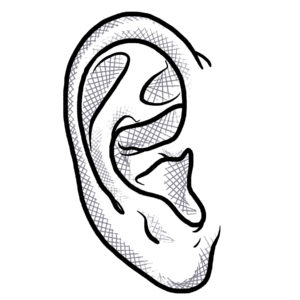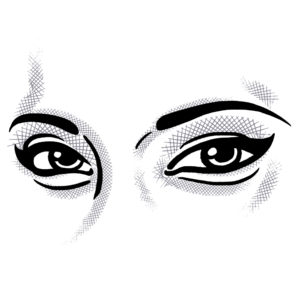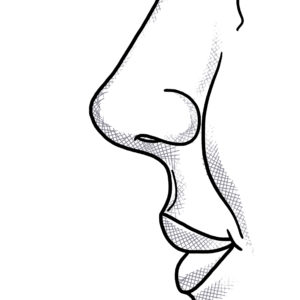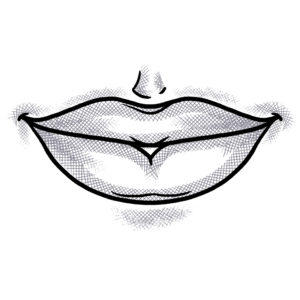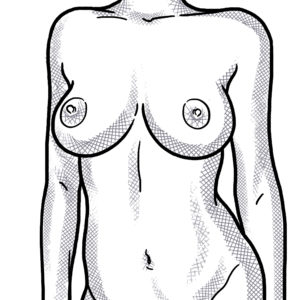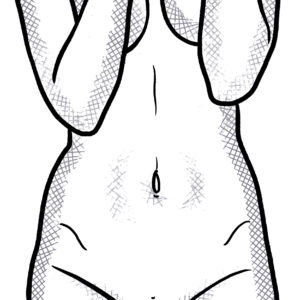Surface Piercings
A surface piercing is any body piercing which is performed on a surface of the body/skin which is neither convex nor concave (i.e. flat skin surfaces which neither protrude nor are indented). This means that the entry and exit points are on the same plane, which gives that characteristic impression that the balls have been casually placed on the surface of the skin. However, given that surface piercings are subjected to tension, they will also tend to be rejected and grow out. This risk can be minimized by using the appropriate form of jewelry and the correct placement. We use the 90° titanium surface bars for this purpose, and occasionally PTFE bars.
Jewelry:
The so-called surface bars are specially designed for surface piercings. These are barbells with two 90° bends at the end (going in the same direction) which reduce the amount of tension.
Flexible PTFE jewelry is also a popular choice. The straight shape of this material does adapt itself to the curvature of the piercing canal, but due to its tendency to reassume its original line, it ends up exerting constant pressure on the canal. That is why we recommend using titanium surface bars.
The length is up to the customer. We simply make sure that it is suited to the individual’s anatomy.
Once the piercing has been executed, the length can no longer be altered.
When it comes to the balls, the color is up to the customer to choose.
Healing:
The healing of a surface piercing can last longer than with a normal piercing, due to the skin being under a certain amount of tension.
The length of the piercing will also affect the time it takes to heal.
The diameter used will be either 1.2mm or 1.6mm.
In general, it takes an average of 2 months to heal.
Daily care is essential during the healing phase.
We recommend a combination of ProntoLind Spray and ProntoLind Gel.
Placement:
A vital aspect of surface piercing is gauging the correct depth of the piercing canal. If the surface bar is not deep enough, the jewelry will be too loose. The ends will protrude too far from the piercing canal, which will cause them to lean to one side or the other and irritate the surrounding tissue. On the other hand, if it is too deep, the balls will press on the skin and lead to rashes and possible inflammation.
Therefore, the piercer must study the area well in order for the piercing canal and the jewelry to be properly calibrated.
A surface piercing can be performed virtually anywhere on the body, from head to toe. The customer can therefore give free rein to his imagination.
Traditional Surface Piercings:
One of the most popular surface piercings is the eyebrow piercing, popular in the 1990s, and the bridge piercing, on the bridge of the nose.
In the female pubic region you have the Christina piercing, and the equivalent pubic piercing for the man. The Hafada piercing of the scrotum is very easy to carry out, unlike other surface piercings, and has a shorter and less complicated phase of healing.
In the neck area there is the nape piercing and the Madison piercing, located on the suprasternal notch.
On the hand you have a potential piercing canal in the area between the fingers. However, in addition to the usual difficulties that come with a surface piercing, you also have the fact that the hand is constantly exposed to friction and irritation in everyday tasks.
Piercing Wiki
Auf der Suche nach Informationen zu Themen rund um Piercings, Piercing Materialien und diverse Piercing Arten? Unser Piercing-Wikipedia wird ständig überarbeitet um immer die aktuellsten Infos zu geben.
Marc
und Piercer
Reserviere online einen Termin für dein Wunschpiercing bei uns.
Über 40.000 qualitativ hochwertige Piercings und Werkzeuge zur Auswahl.

